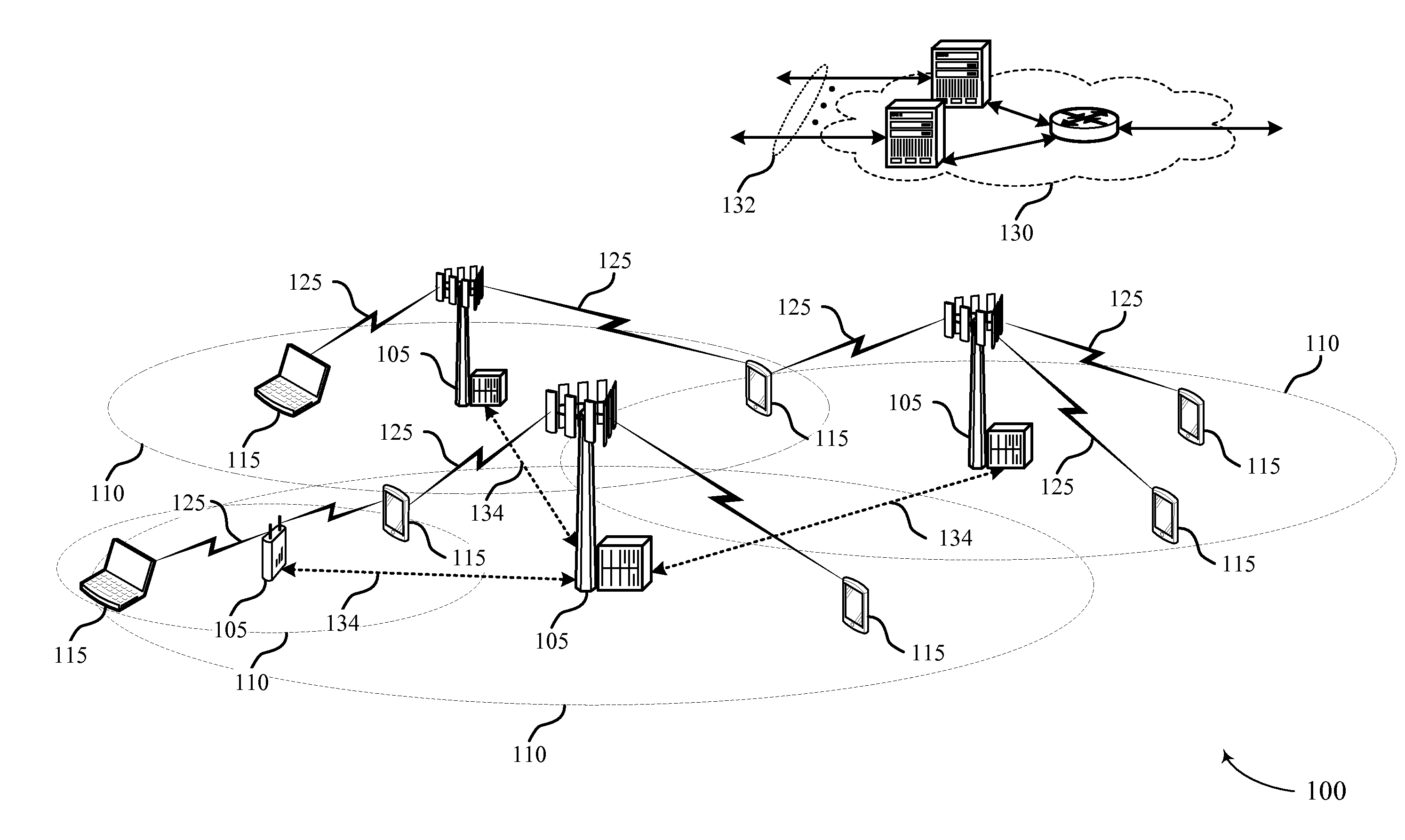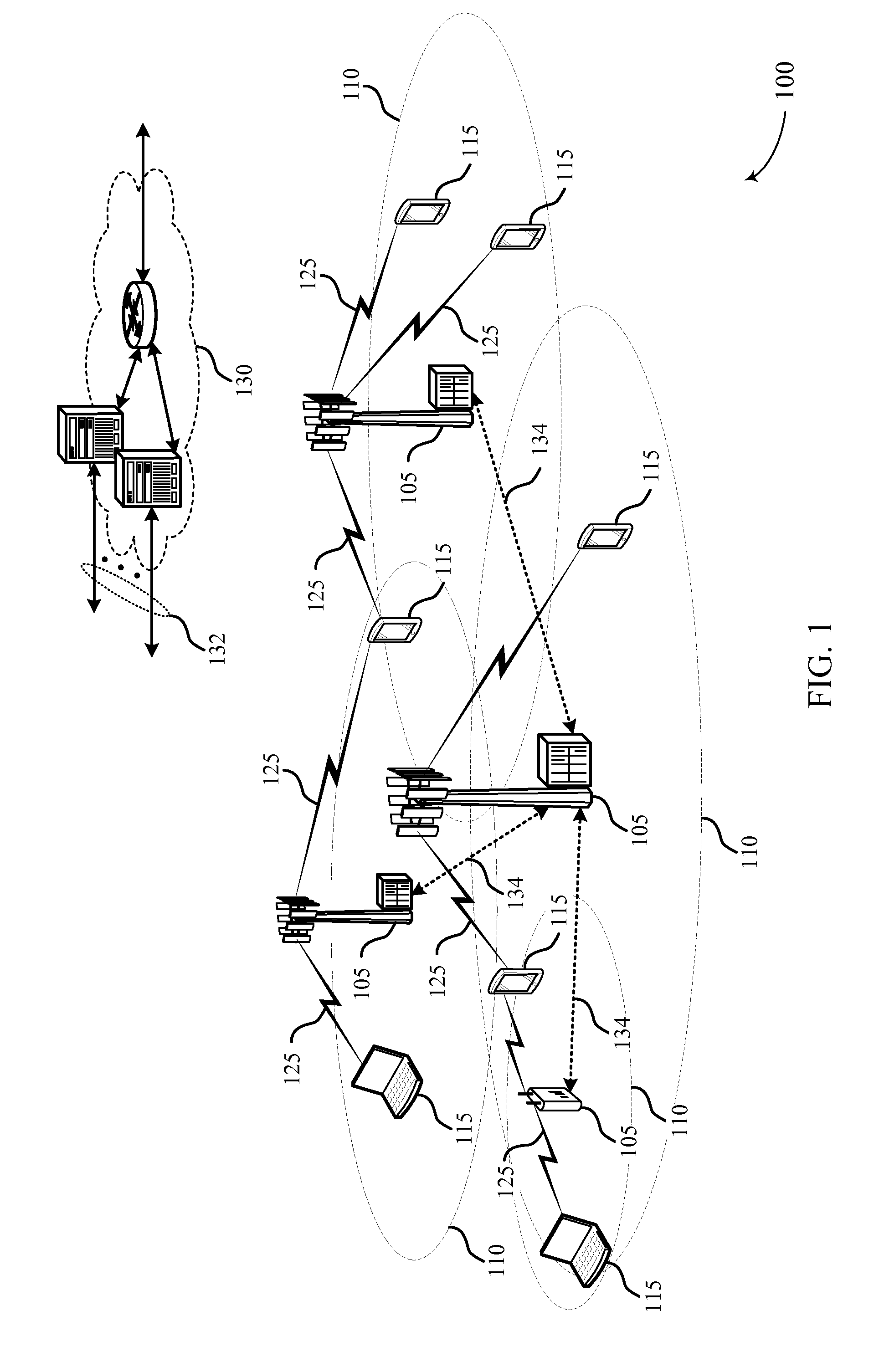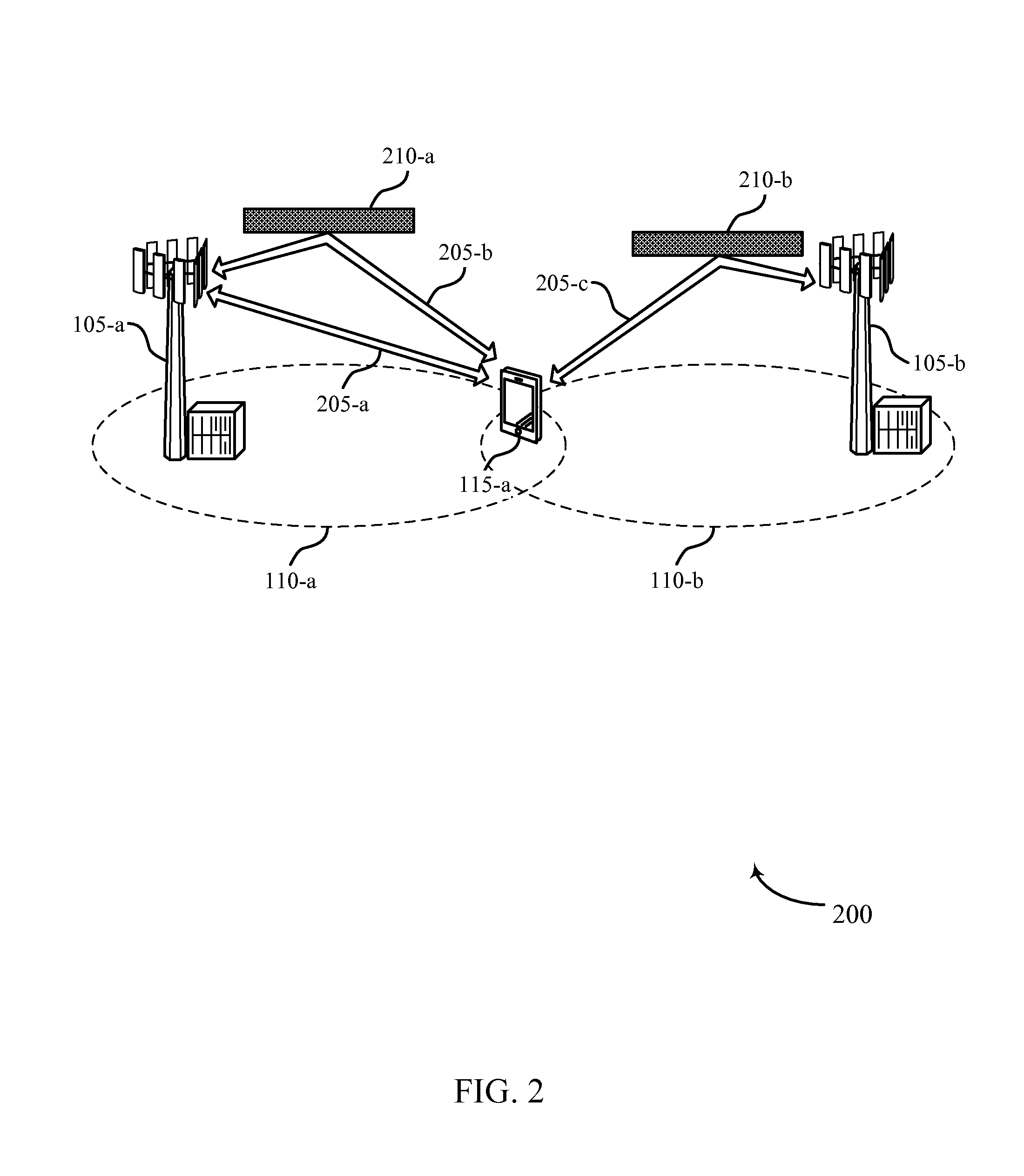Techniques for beam shaping at a millimeter wave base station and a wireless device and fast antenna subarray selection at a wireless device
a technology of millimeter wave base station and wireless device, which is applied in the field of wireless communication, can solve the problems of high path loss, frequent high path loss, and increased resource consumption of millimeter wave communications, and achieve the effect of improving link margins and improving user equipment discovery latency
- Summary
- Abstract
- Description
- Claims
- Application Information
AI Technical Summary
Benefits of technology
Problems solved by technology
Method used
Image
Examples
Embodiment Construction
[0057]The described features generally relate to improved systems, methods, or apparatuses for beam shaping at a millimeter wave base station and a wireless device. As discussed above, millimeter wavelength signals frequently experience high path loss, and as a result, directional beam forming techniques may be used for uplink (UL) or downlink (DL) transmissions between a base station and a UE using millimeter wavelength frequencies. Directional beamforming techniques may enable a transmitter to transmit a signal onto a particular propagation path, and may enable a receiver to receive a signal from a particular propagation path.
[0058]The quality of link margins between the base station and the UE, however, may be dependent on a number of factors, including the location of the UE in relation to the millimeter wave base station or the type of codebook utilized by the base station and the UE for beamforming. For example, while broader beam codebooks (e.g., coarse codebook or intermedia...
PUM
 Login to View More
Login to View More Abstract
Description
Claims
Application Information
 Login to View More
Login to View More - R&D
- Intellectual Property
- Life Sciences
- Materials
- Tech Scout
- Unparalleled Data Quality
- Higher Quality Content
- 60% Fewer Hallucinations
Browse by: Latest US Patents, China's latest patents, Technical Efficacy Thesaurus, Application Domain, Technology Topic, Popular Technical Reports.
© 2025 PatSnap. All rights reserved.Legal|Privacy policy|Modern Slavery Act Transparency Statement|Sitemap|About US| Contact US: help@patsnap.com



